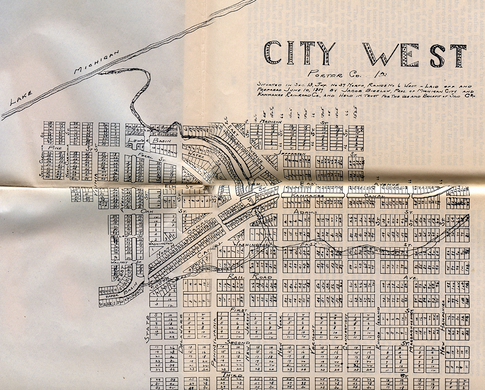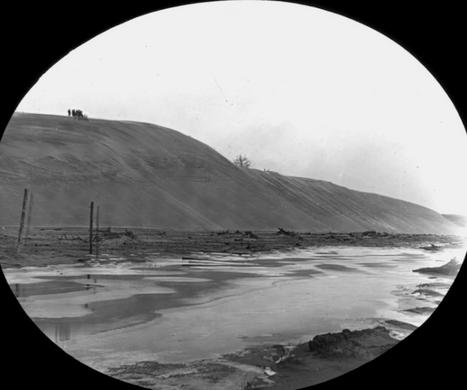City West Ghost Town
The site of a 19th century "dream city" that almost rivaled Chicago before being swallowed by the Indiana sand dunes.
Though Chicago grew up to become America’s third biggest city, 30 years before the Civil War it wasn’t much of a place. In the early-1800s, Chicago still only had about 200 residents. Hounded by disease and hardship, it almost joined the long list of American ghost towns. And in 1837, an ill-fated town called City West tried to knock the Windy City out of the running.
City West sprouted up about 60 miles across the lake from Chicago in what became Indiana Dunes State Park. Apart from a tiny frontier French outpost, before the 1830s there were few whites living in the Indiana Dunes. When Michigan City, Indiana, popped up as a railroad town and lumber port, rival investors started their own town a few miles down the beach.
But City West turned out to be a “dream city,” mostly doodles on a map, though a few buildings did see the light of day.
A (mostly imaginary) plat map shows plans for a big town, time and place considered. One settler built a sawmill to turn out boards for houses. Gardens sprouted up in the sandy soil. Indians came down the lake in canoes to see the activity. About 20 American families showed up, maybe 200 people total. One man built a 22-room hotel and tavern, probably the biggest building between Chicago and Detroit.
Timothy Ball, an 11-year-old settler from Massachusetts, later remembered City West’s short lifespan. The town had no church or school, so kids spent their time harvesting berries in the dunes and watching sails on the lake. A few settlers died there that summer, but shifting sand dunes gobbled the cemetery up.
Then American banks and businesses began to collapse. Soon, City West’s promoters abandoned it and the place became a ghost town.
Yet some families stayed in the area and children found a great adventure spot in the ruins. In a fascinating prelude to the housing bust of the early 2000s, which left suburban real estate developments empty, pioneer kids explored brand-new homes left open to nature, including the 22-room hotel. “The houses were there but the place was solitude,” Timothy Ball wrote.
Some houses were swallowed by sand dunes, but most were taken apart and carted away for lumber. Around 1853, “on a night of wild thunderstorms,” Ball recalled, the last traces of City West burned down in a forest fire, sparked either by lightning or debris from a passing train. The Windy City itself burned down in 1871, but by that time Chicago, unlike City West, was important enough to rebuild.
Know Before You Go
A commuter rail station called Tremont ("Three Mountains") later grew up near the site. The creation of Indiana Dunes National Lakeshore, however, choked off development. By the 1960s, Tremont, too, dwindled away. Officially called Waverly Beach today, the site is the location of a large parking lot and the 1930's bathing pavilion at Indiana Dunes State Park. You can see Chicago's skyscrapers on the horizon at sunset.Though wedged in between the steel mills of Gary and Michigan City's often-mistaken-for-a-nuclear power plant, Indiana Dunes is an amazingly beautiful natural area about an hour southeast of Chicago. It's been a favorite playground for Chicagoans since the 1920s, when early filmmakers used the dunes as a stand-in for the Sahara Desert. Many people find it hard to imagine "coastal Indiana," but the park is well worth a visit and has some great beaches. If you come for the swimming, though, come in July and August. The South Shore Rail Line can take you from downtown Chicago all the way to the gates of the state park.
Community Contributors
Added by
Edited by
The Atlas Obscura Podcast is Back!






















Follow us on Twitter to get the latest on the world's hidden wonders.
Like us on Facebook to get the latest on the world's hidden wonders.
Follow us on Twitter Like us on Facebook